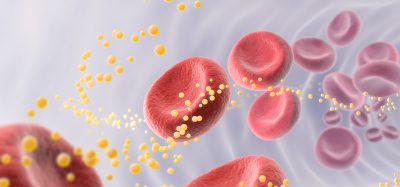The rising demand for lentiviral vectors for in vivo gene therapy
Posted: 6 September 2024 | Natalia Elizalde (VIVEbiotech) | No comments yet
Fuelled by advances in rare disease treatments and vaccination efforts, Natalia Elizalde, CBO at VIVEbiotech, discusses how the market demand for lentiviral vectors is evolving, the new therapeutic areas emerging as potential targets for in vivo gene therapy and the latest technological advancements in the development and delivery of in vivo lentiviral vectors.


What trends are driving the increased use of in vivo delivery methods in gene therapy?
The increased use of lentiviral vectors in vivo delivery in gene therapy has been driven by various industry trends, including development of in vivo CAR-Ts, the use of in vivo vectors for rare diseases as well as the significant increase in their use in vaccination, both for oncology and infectious disease applications. These programmes frequently use innovative pseudotypes and decorated LVVs using different envelop plasmids and modified producer cell lines.
VIVEbiotech is involved in the manufacture of more than 50 different LVVs since 2015, eight of these programmes being for in vivo applications.
How is the market demand for lentiviral vectors evolving, and what factors are influencing this growth?
There is a very significant increased market demand for lentiviral vectors. Different market reports indicate an increased CAGR of around 17 percent. Being a specialist lentiviral vector CDMO, at VIVEbiotech, this annual growth rate has been higher with a CAGR from 2020 to 2023 of almost a 50 percent.
This growth has been influenced by the increased use of lentiviral vectors for more prevalent diseases, earlier treatment lines and broader applications.
Importantly, the use of these vectors for in vivo applications that encompass larger amounts of vectors per patient is also contributing to this growth.
Finally, the market demand has increased as clinical trials are advancing towards more advanced phases and more vectors are being approved for commercial use. This has meant larger number of batches at bigger scales are being manufactured.
What are the main challenges associated with manufacturing a more precise lentiviral vectors for in vivo treatment, and how can these challenges be overcome?
Generally, the amount of lentiviral vector that is used for in vivo gene therapy is larger than for ex vivo use. There are some exceptions, such as the programmes in which the lentiviral vector is being used in vivo for vaccination purposes, as in these cases relatively low amounts of vectors are required.
Especially for these in vivo programmes encompassing the use of large amounts of vector per patient, it is key to be able to deliver cost-effective lentiviral which will have a direct impact in the access of these therapies to the market considering reimbursement aspects.
To achieve this, VIVEbiotech is incessantly working to increase productivity by selecting high-producer clones, optimising the construct or transfection ratio if required and working on the optimisation of every single step of the upstream process of our manufacturing platform. Indeed, we have been working over the last nine years on the optimisation of our plug and play manufacturing platform, having manufactured almost 200 batches in reactors. Our focus has always been getting the highest titres as possible.
Another way of increasing cost-effectiveness, is diminishing the amount of lentiviral vector to be administered in vivo per patient. For this, new pseudoypes, as well as the use of modified cell lines able to decorate the vector, are key tools. VIVEbiotech’s manufacturing platform is being used to produce different generation of lentiviral vectors both integrating and non-integrating, using different pseudotypes. Moreover, for some specific programmes, modified cell lines are being used in a successful manner.
The use of adapted pseudotypes or decorated vectors also have an impact on the targeting of the vector and its increased functionality potentially diminishing undesired side effects when directly administered to the patient.
Finally, another challenge is reaching the purity levels that are required for lentiviral vectors in vivo use which is important both from the regulatory point of view but also considering that purity can potentially have a direct effect on the functionality of the vector.
Since 2015, we have been working on the optimisation of every single DSP step with the aim of obtaining purity levels required for in vivo application while keeping a good percentage of recovery of functional titre during downstream processing.
How are new therapeutic areas emerging as potential targets for in vivo gene therapy?
New therapeutic areas are emerging in a powerful way. The in vivo LVV market was the second Top Emerging Technology for Alliance of Regenerative Medicine (ARM) during 2024.
The reasons why we are observing this very rapid growth is due mainly because in vivo lentiviral vectors reduce cost of goods, as well as that “off the shelf” products could reduce time to treatment and patient access with minimal supply-chain logistics avoiding preconditioning.
The potential targets for in vivo gene therapy are very well diversified: in vivo CAR-Ts, rare diseases, vaccination, VLPs or gene editing, among others.
What are the latest technological advancements in the development and delivery of in vivo lentiviral vectors?
Mainly, I would highlight the use of different pseudotypes, optimised packaging plasmids and modified cell lines to increase targeting of lentiviral vectors. In addition, there are improvements in vectors matrix development to allow more efficient storage conditions and stability.
Where is the viral vector and gene therapy space heading?
The viral vector and gene therapy space is becoming a growing field. Specialised multidisciplinary teams are working together from very early stages with a common aim of developing therapies that are commercially available for a large number of patients, in a cost-effective manner.
For this to happen, all the different partners involved in the space, including manufacturers, need to work in an integrated and coordinated manner, considering the therapy development from the beginning to commercial in a global way.
About the author
Natalia Elizalde, PhD, CBO at VIVEbiotech


After her PhD, Natalia has specialised in business development in the biotech sector for over 12 years assuming various roles, first as Business Development Manager in a biotech company specialised in the zebrafish animal model, and as Head of Business Development at a CDMO developing and manufacturing biologicals and cell therapy products.
Natalia is responsible for VIVEbiotech´s business development strategy with respect to the international market.
Related topics
Gene Therapy, Viral vectors
Related organisations
VIVEbiotech
Related people
Natalia Elizalde (VIVEbiotech)








